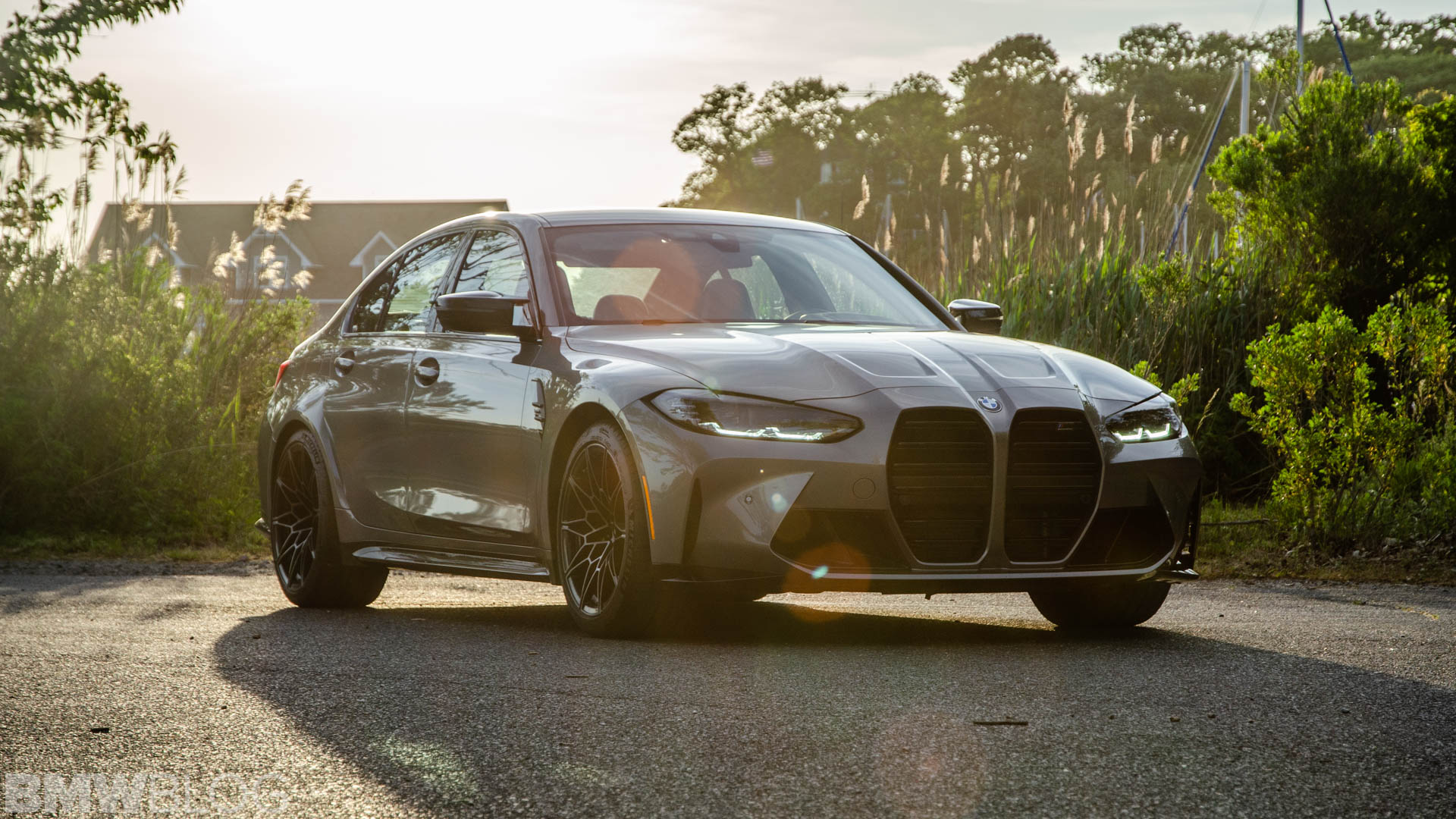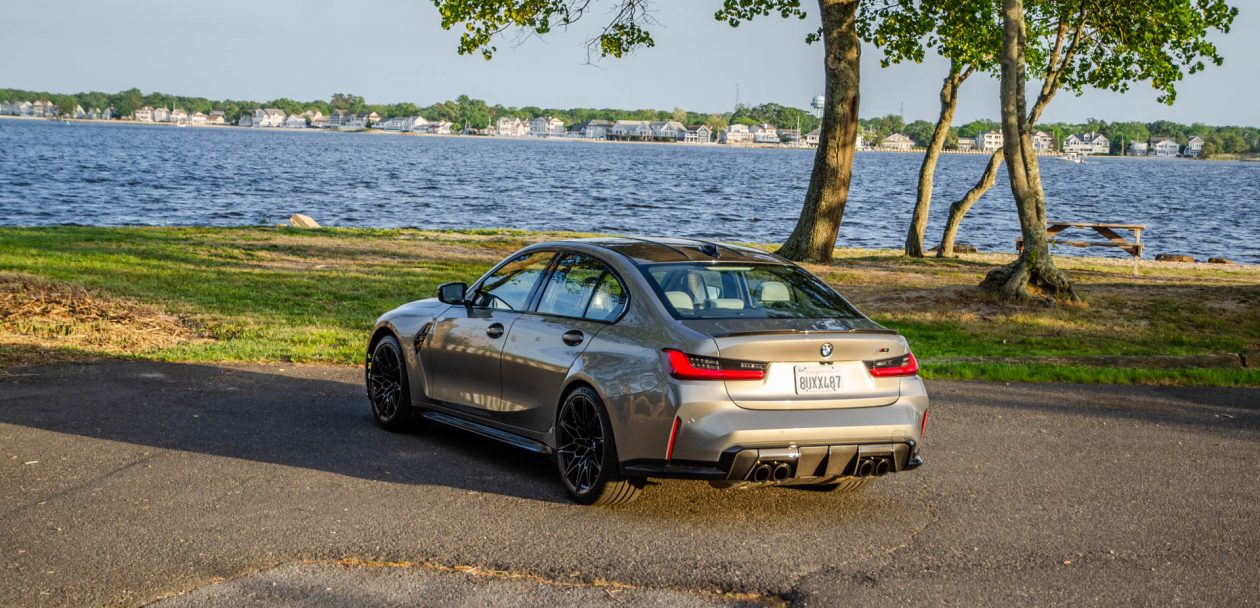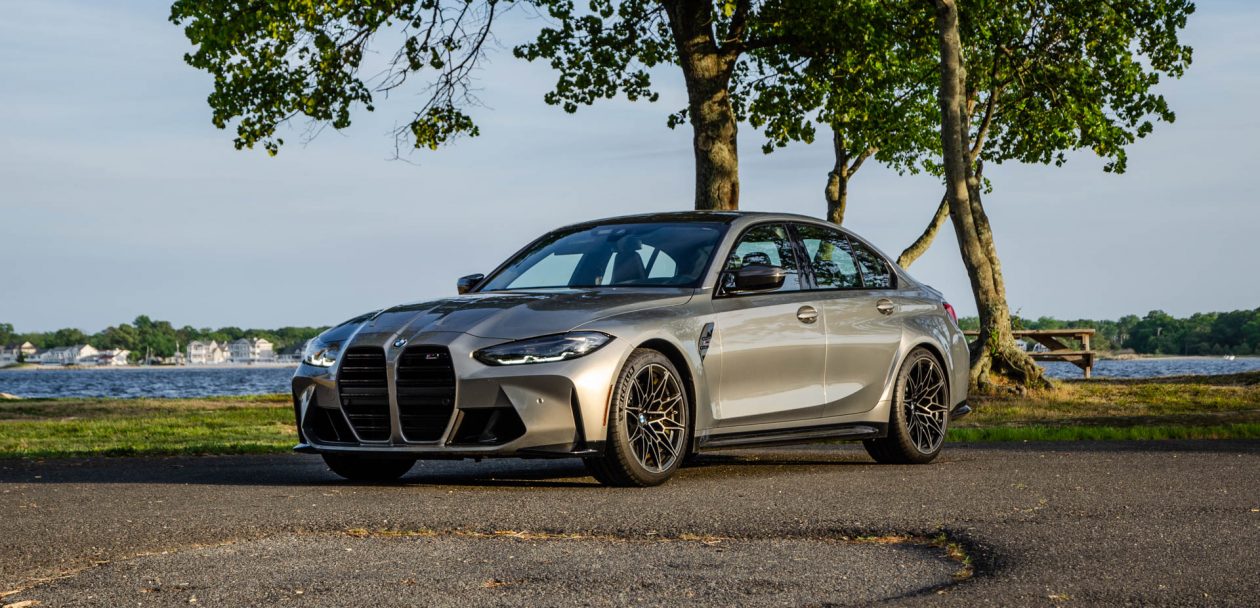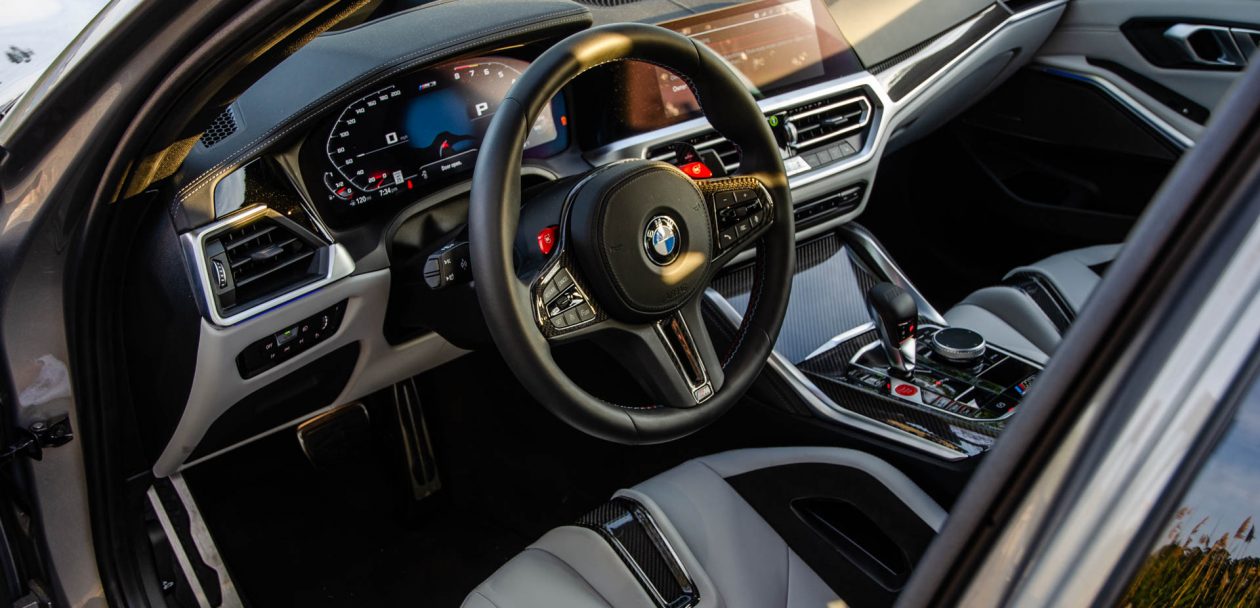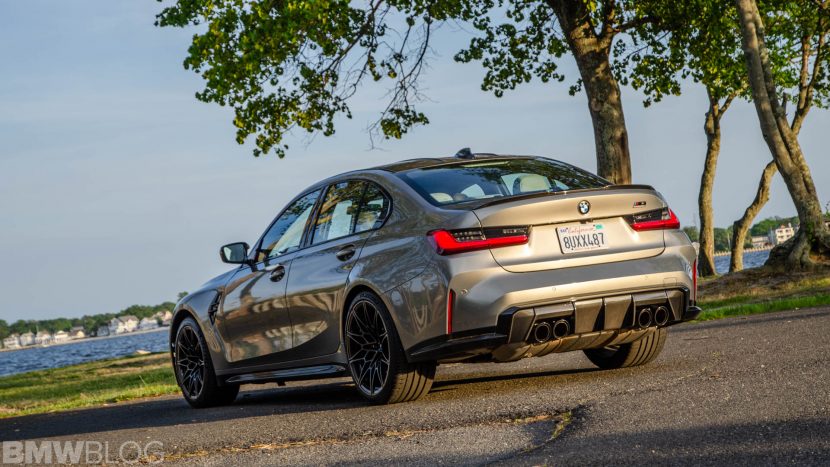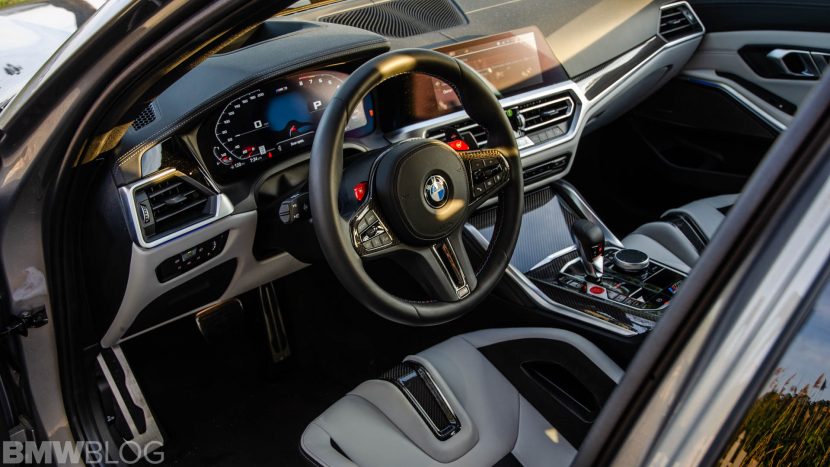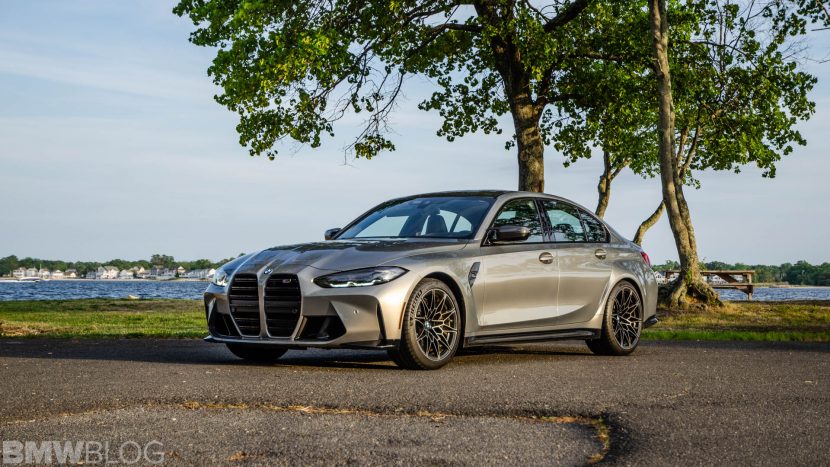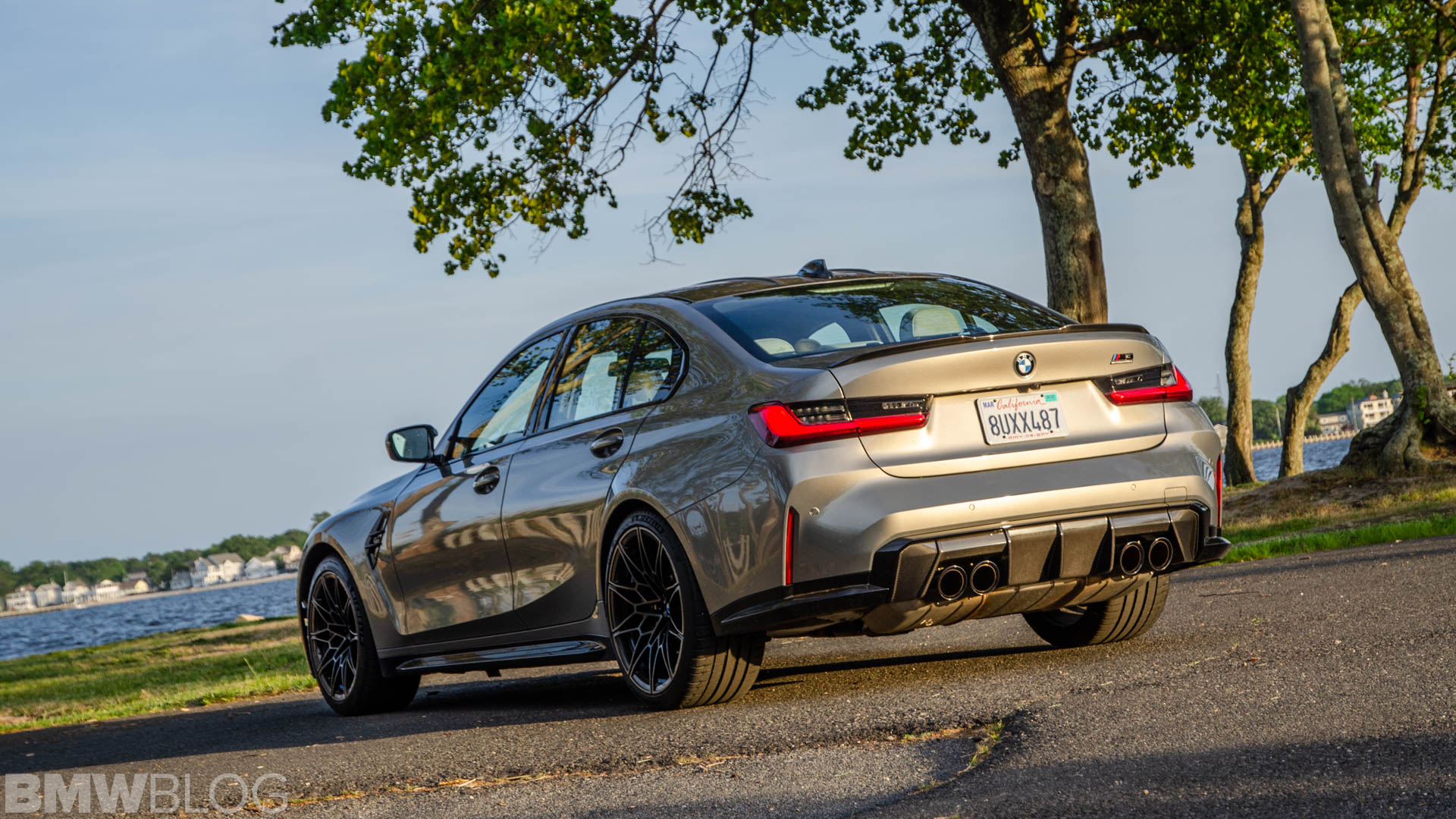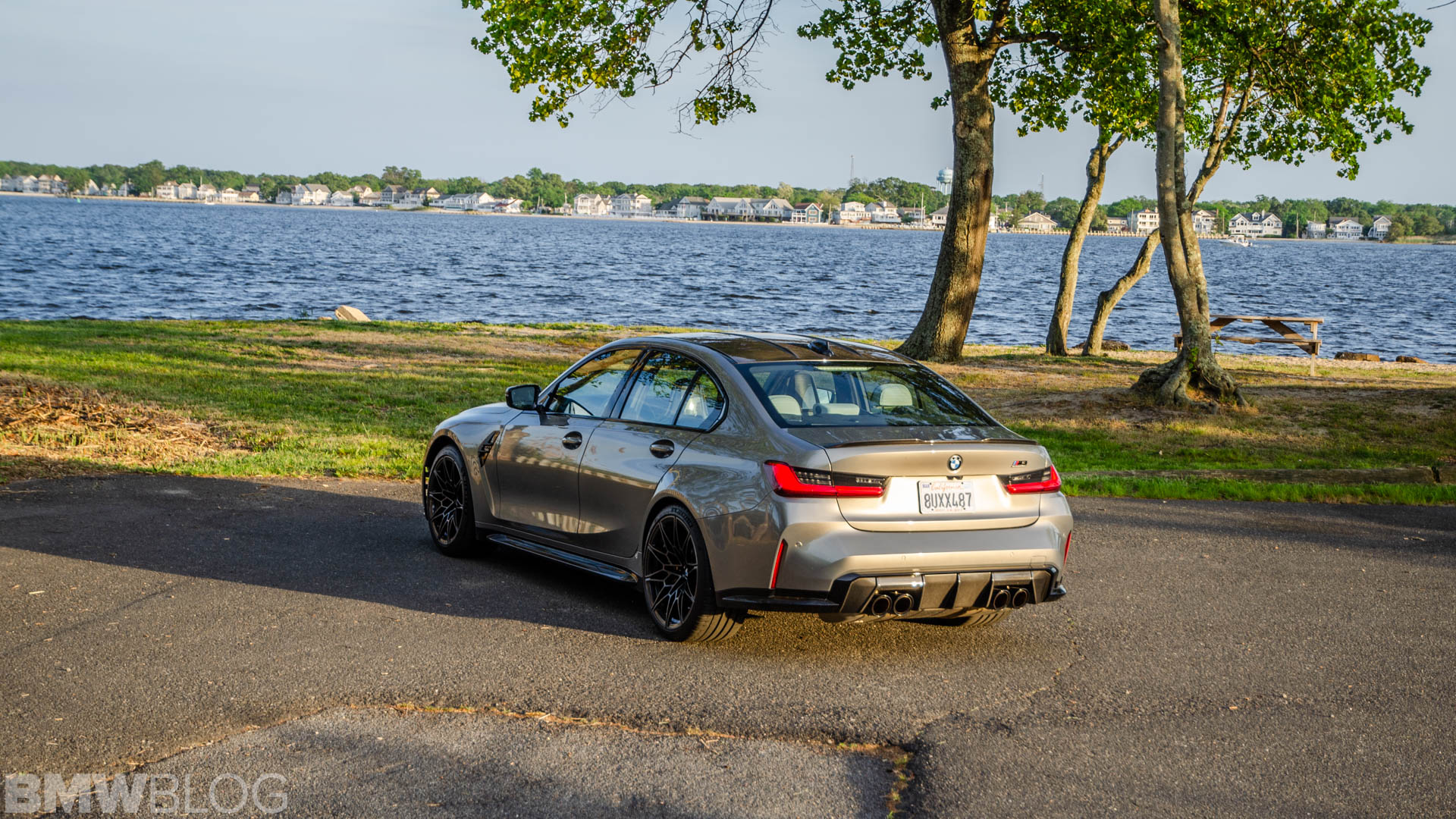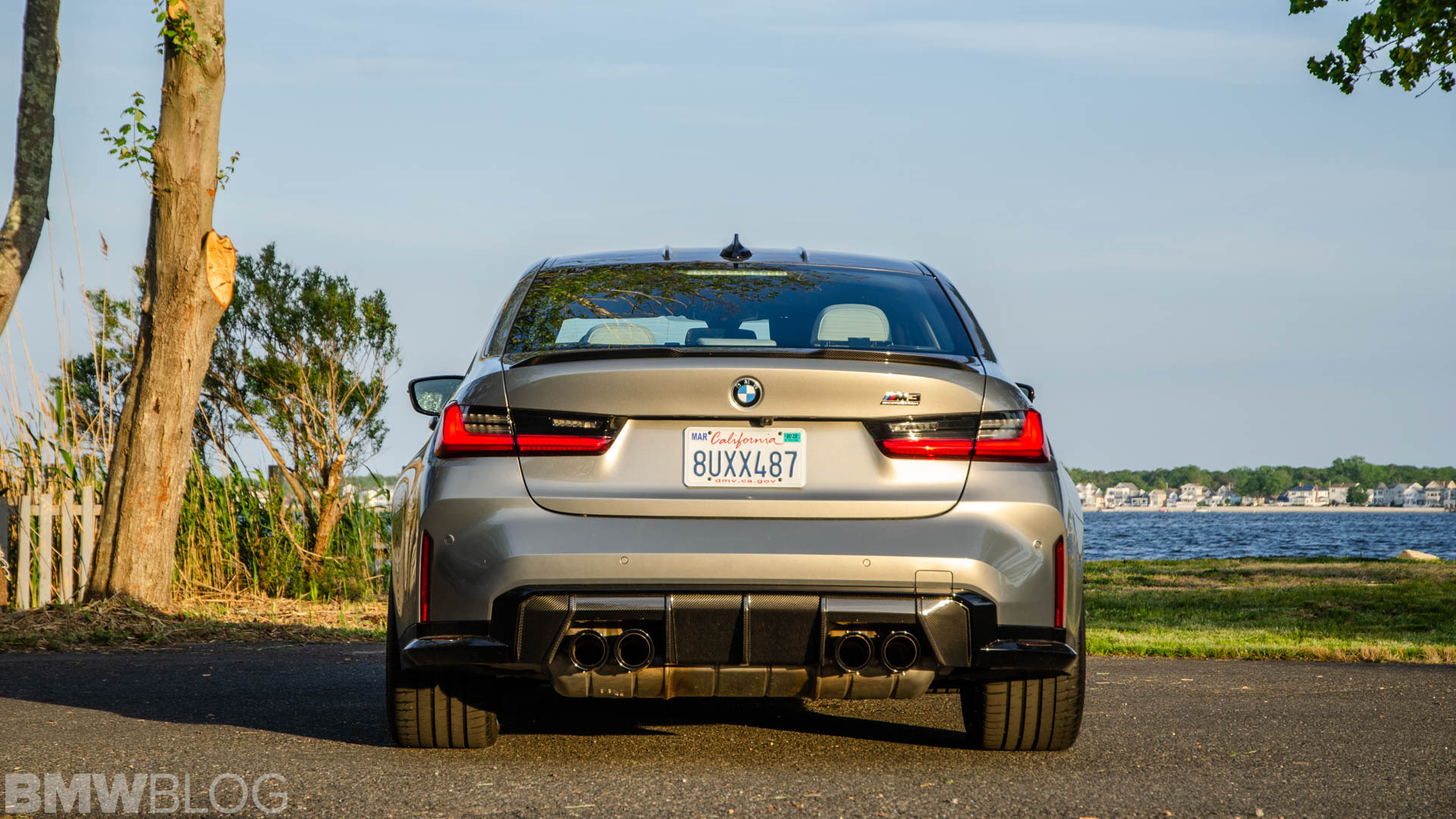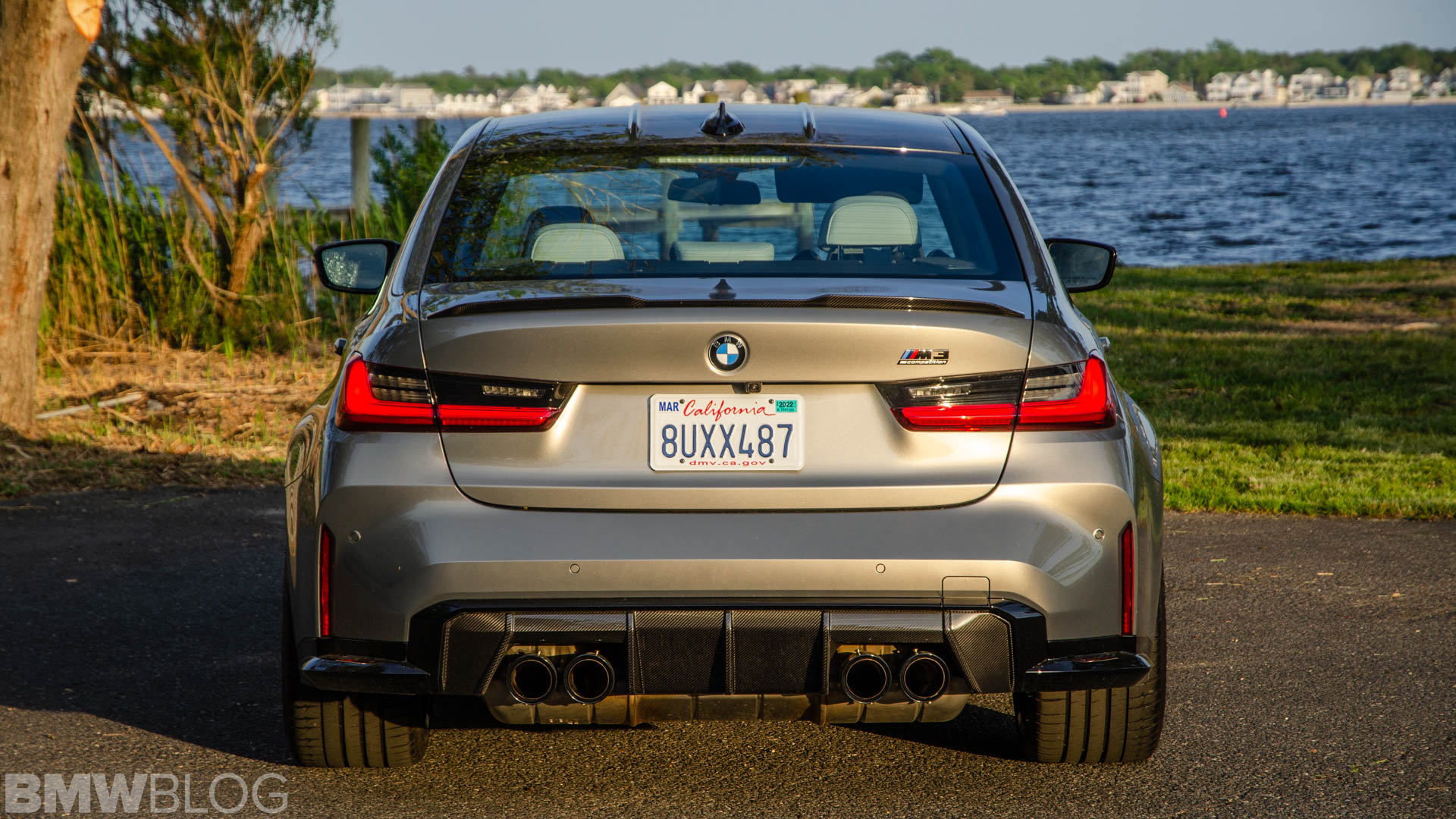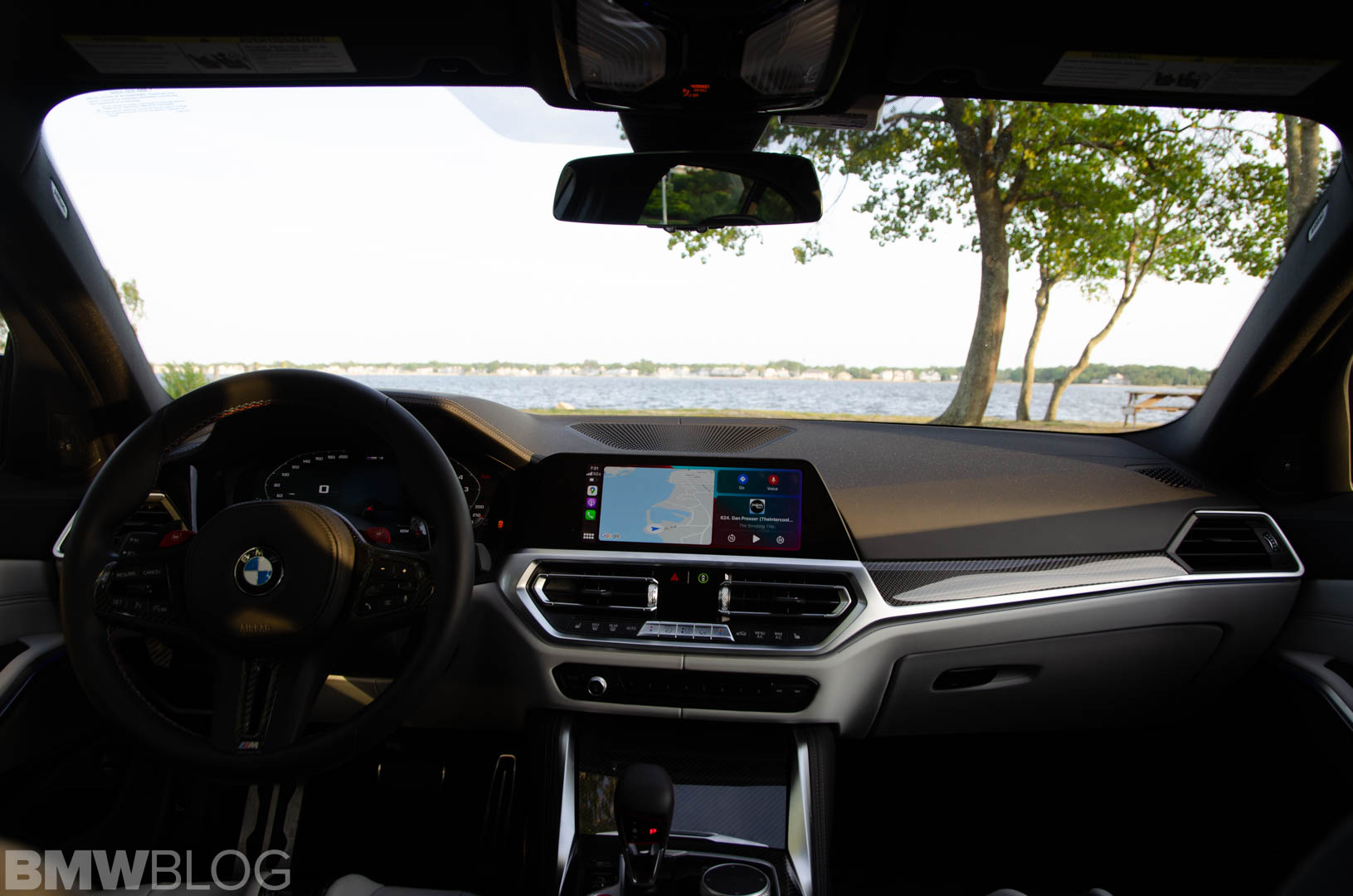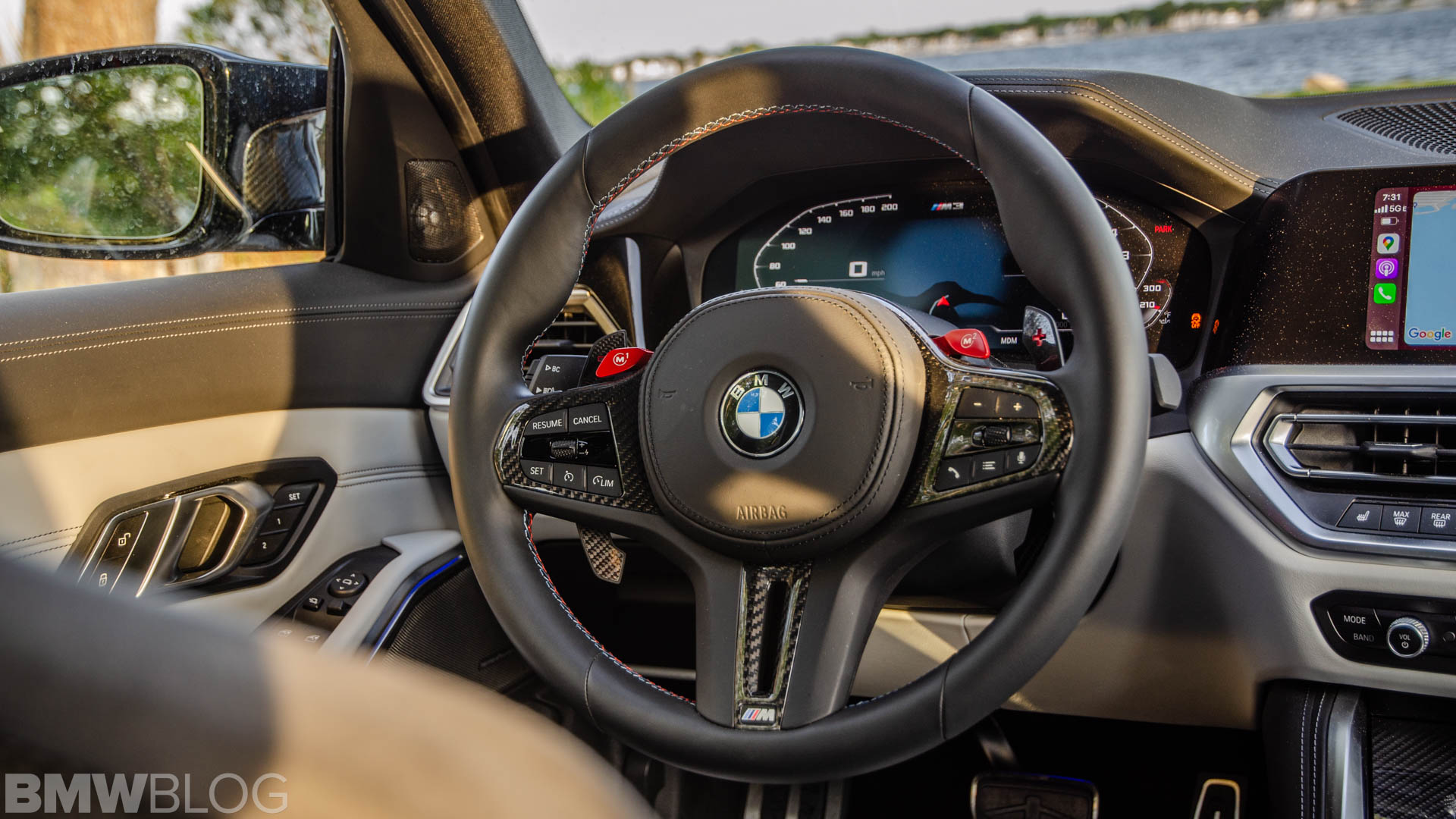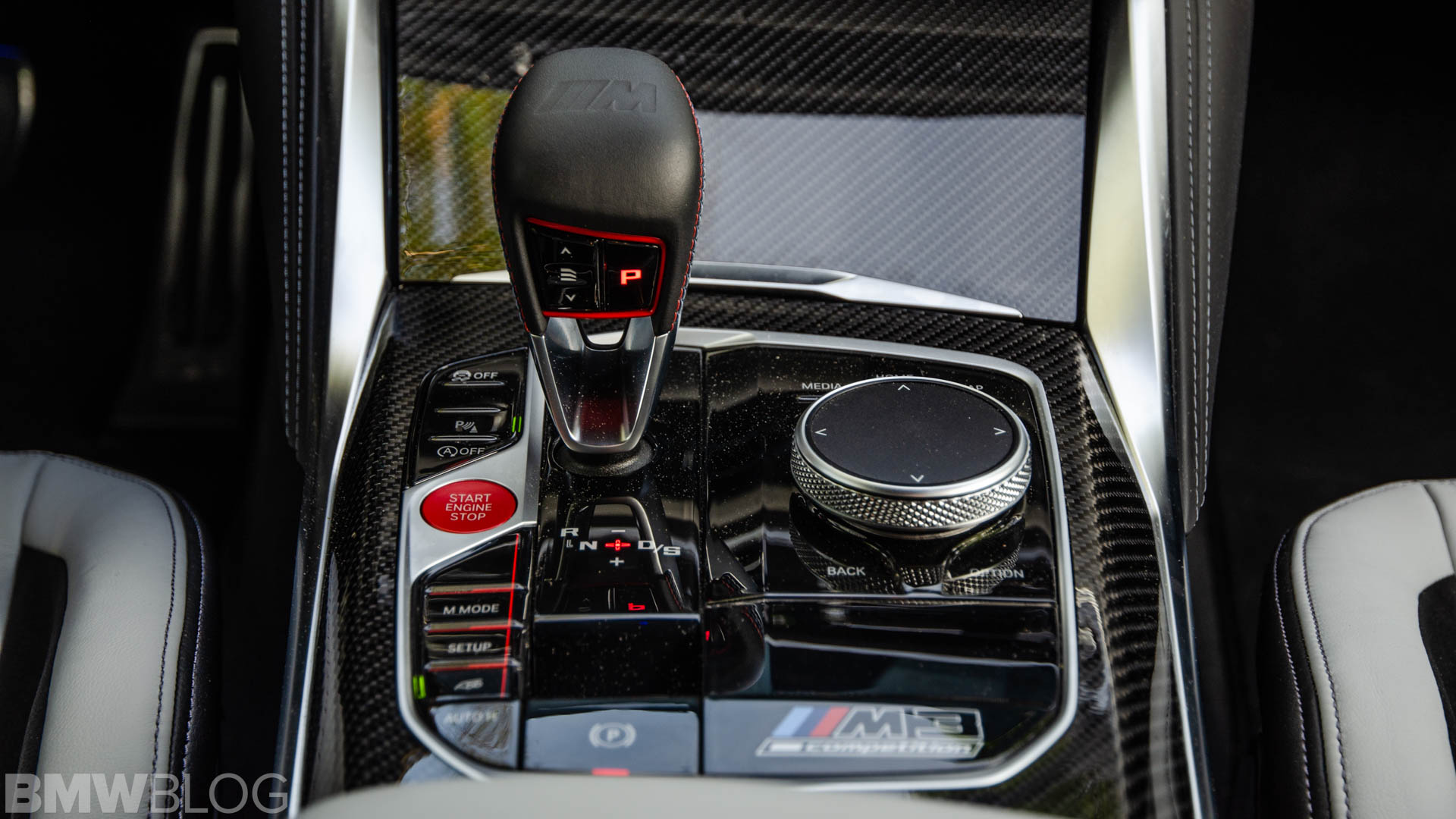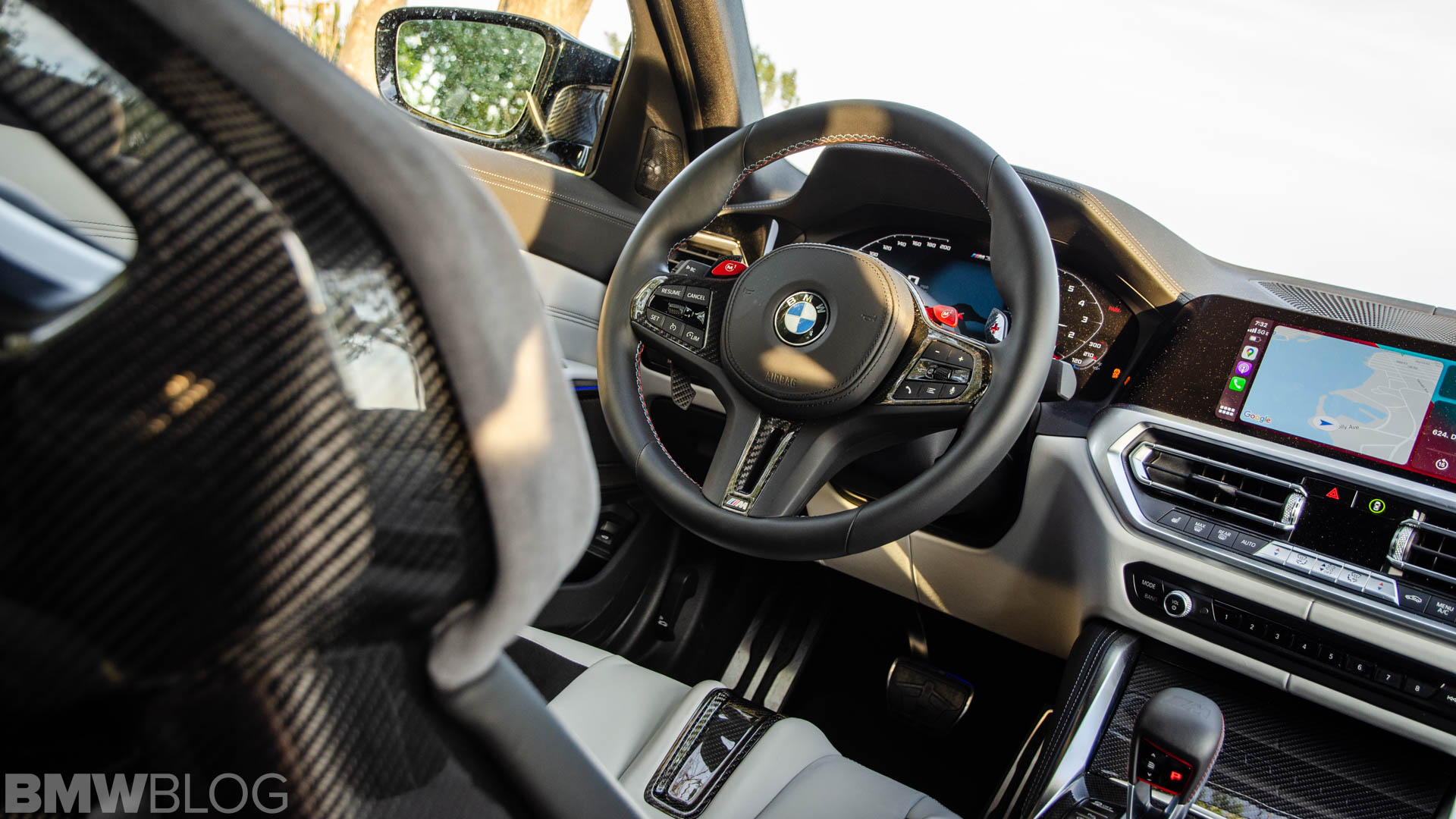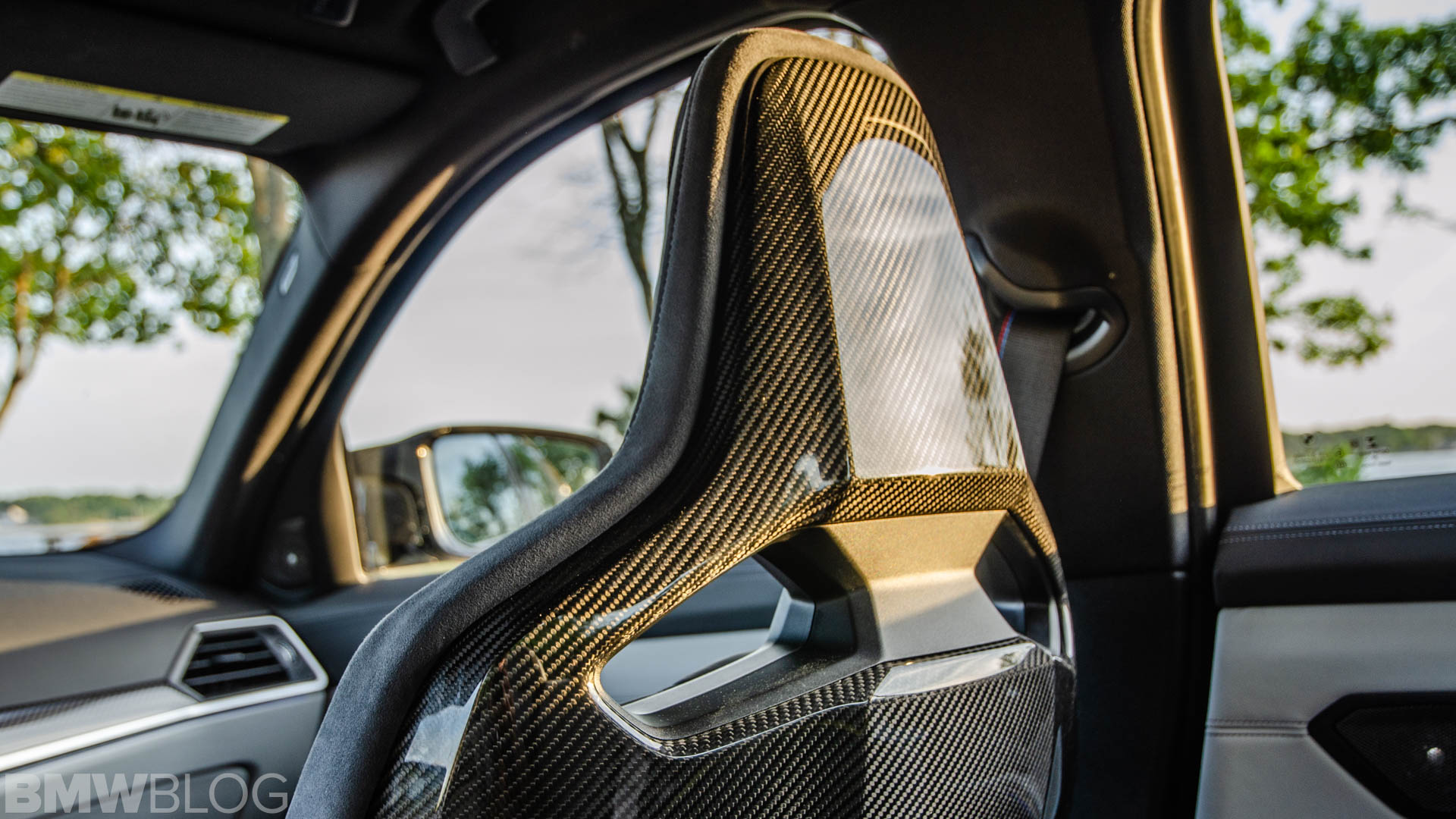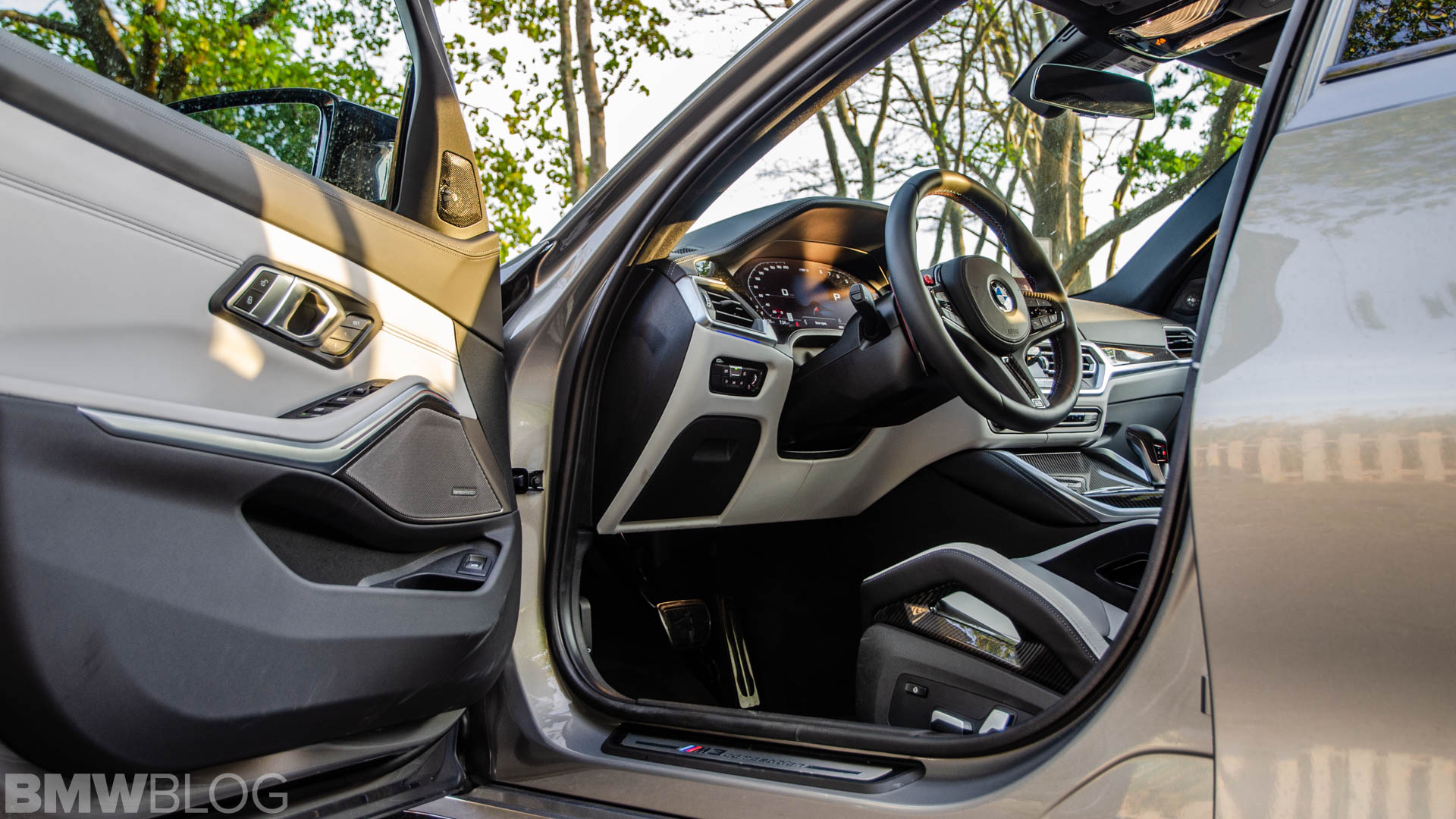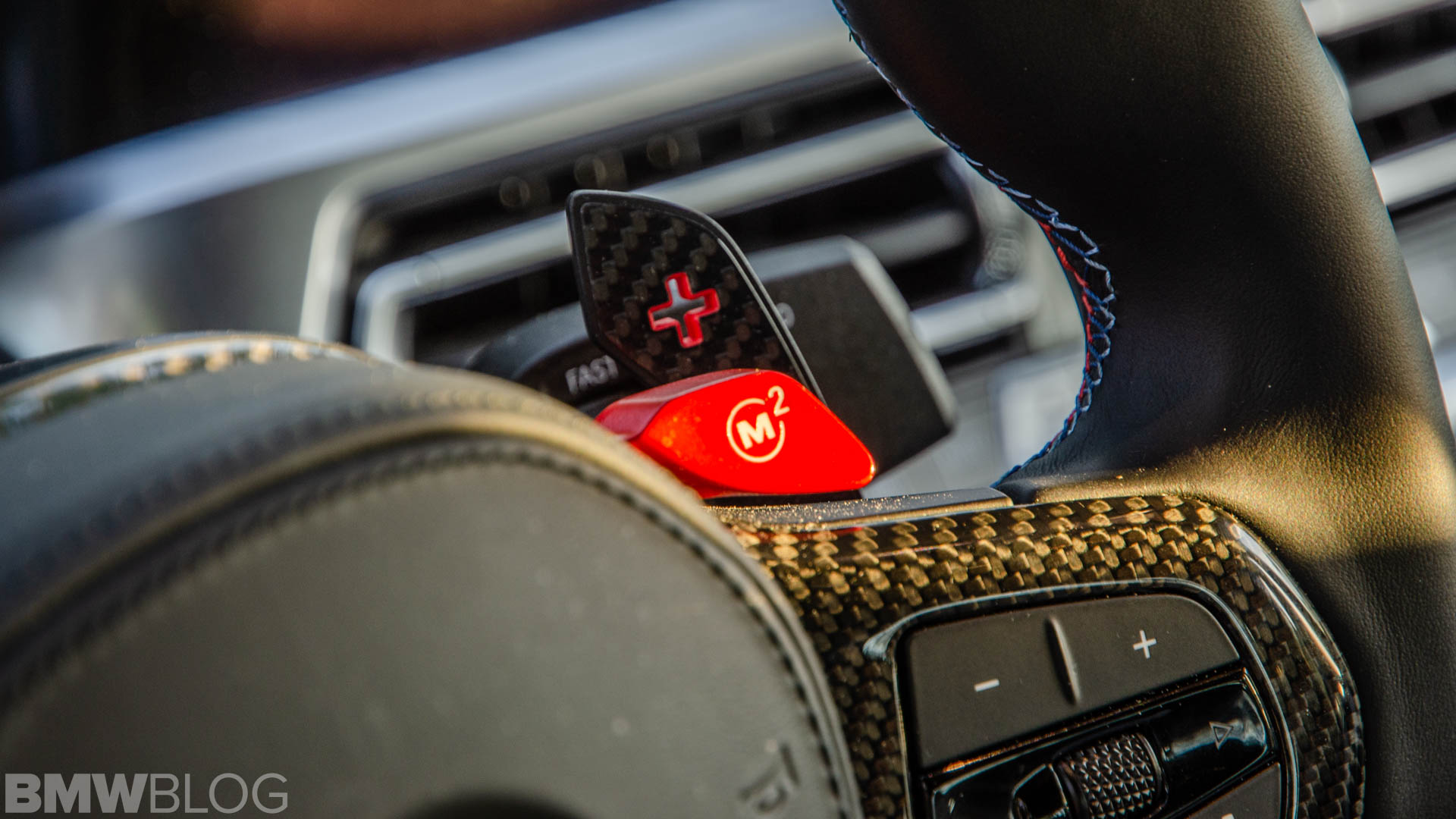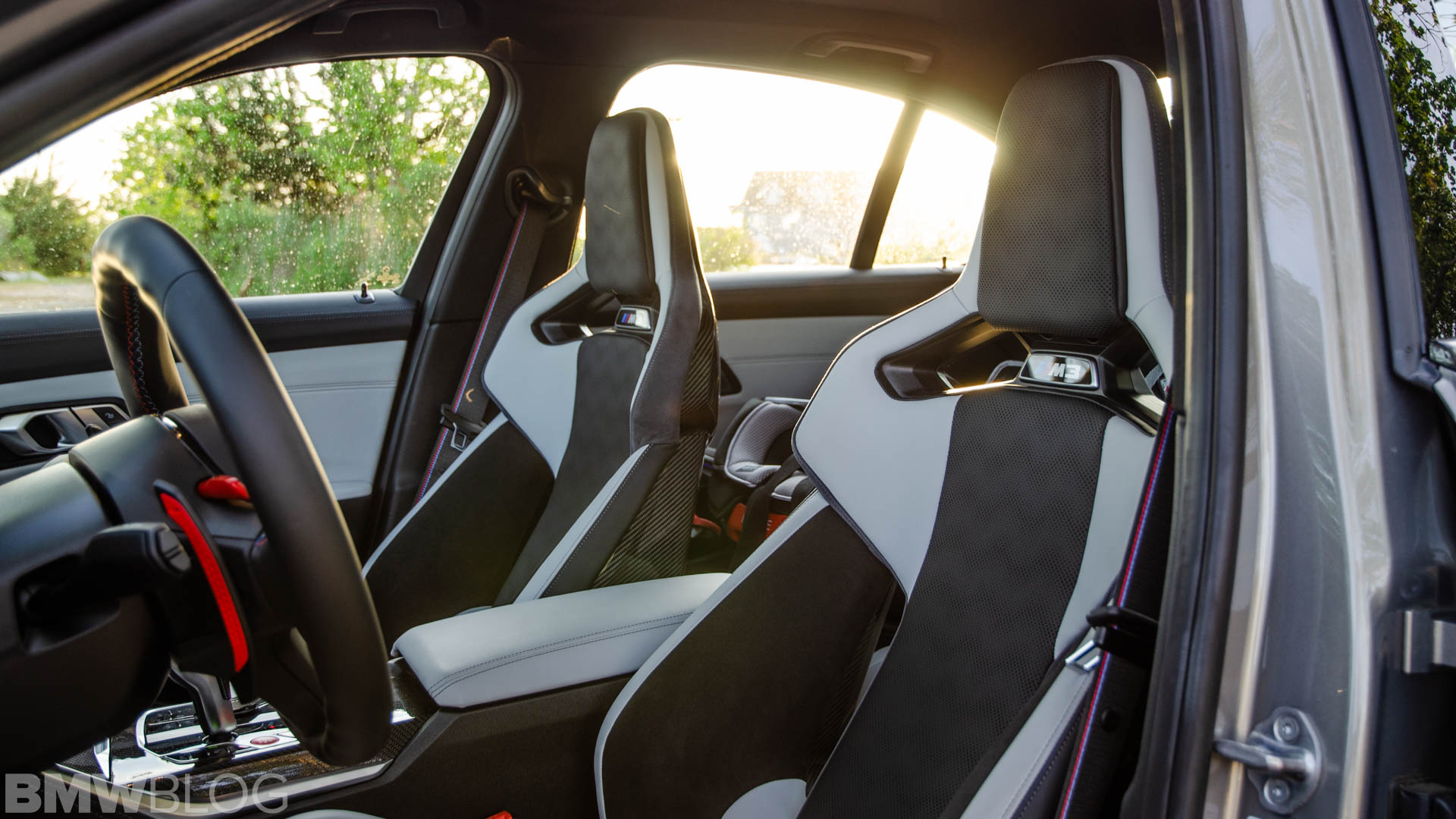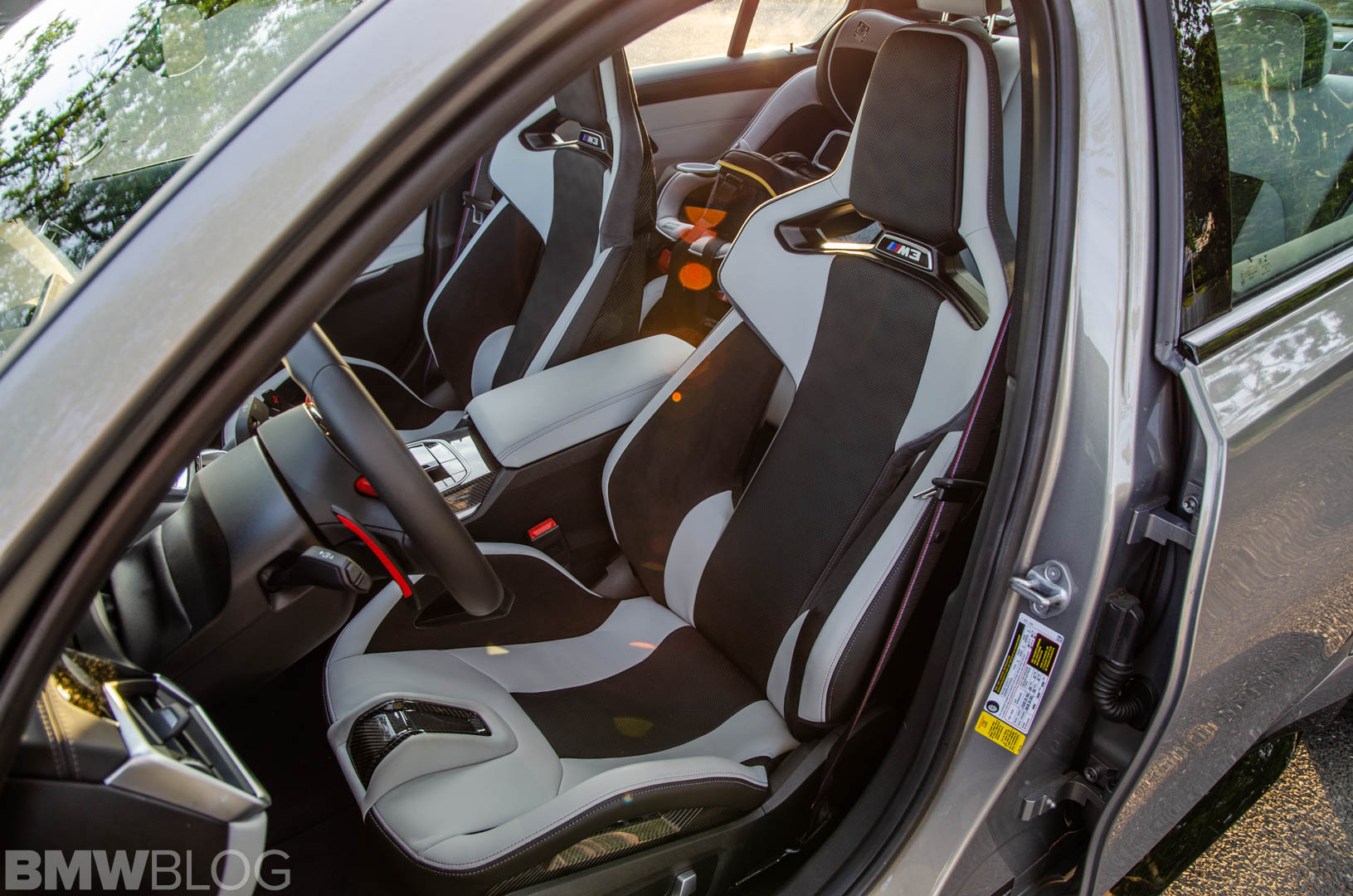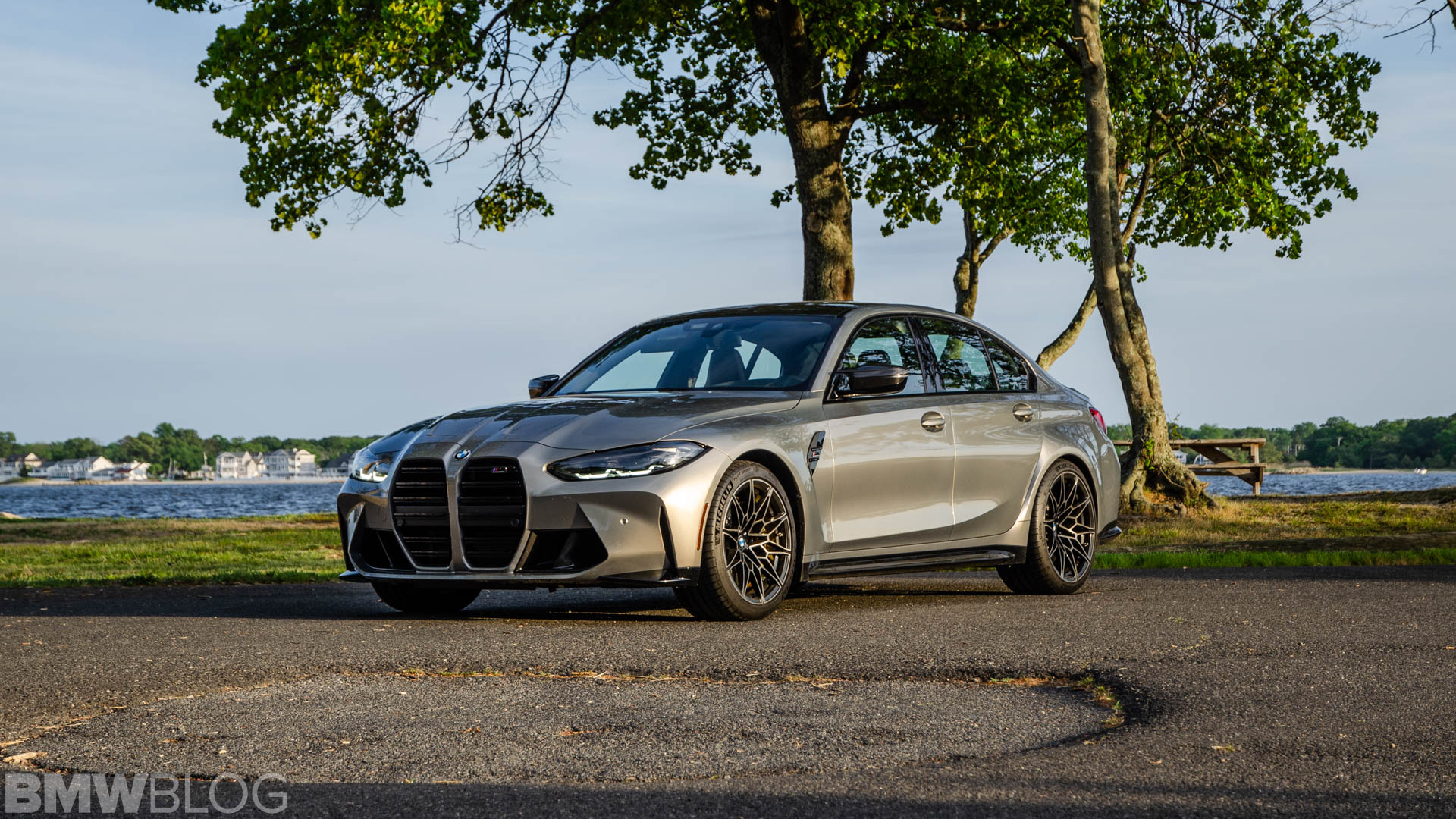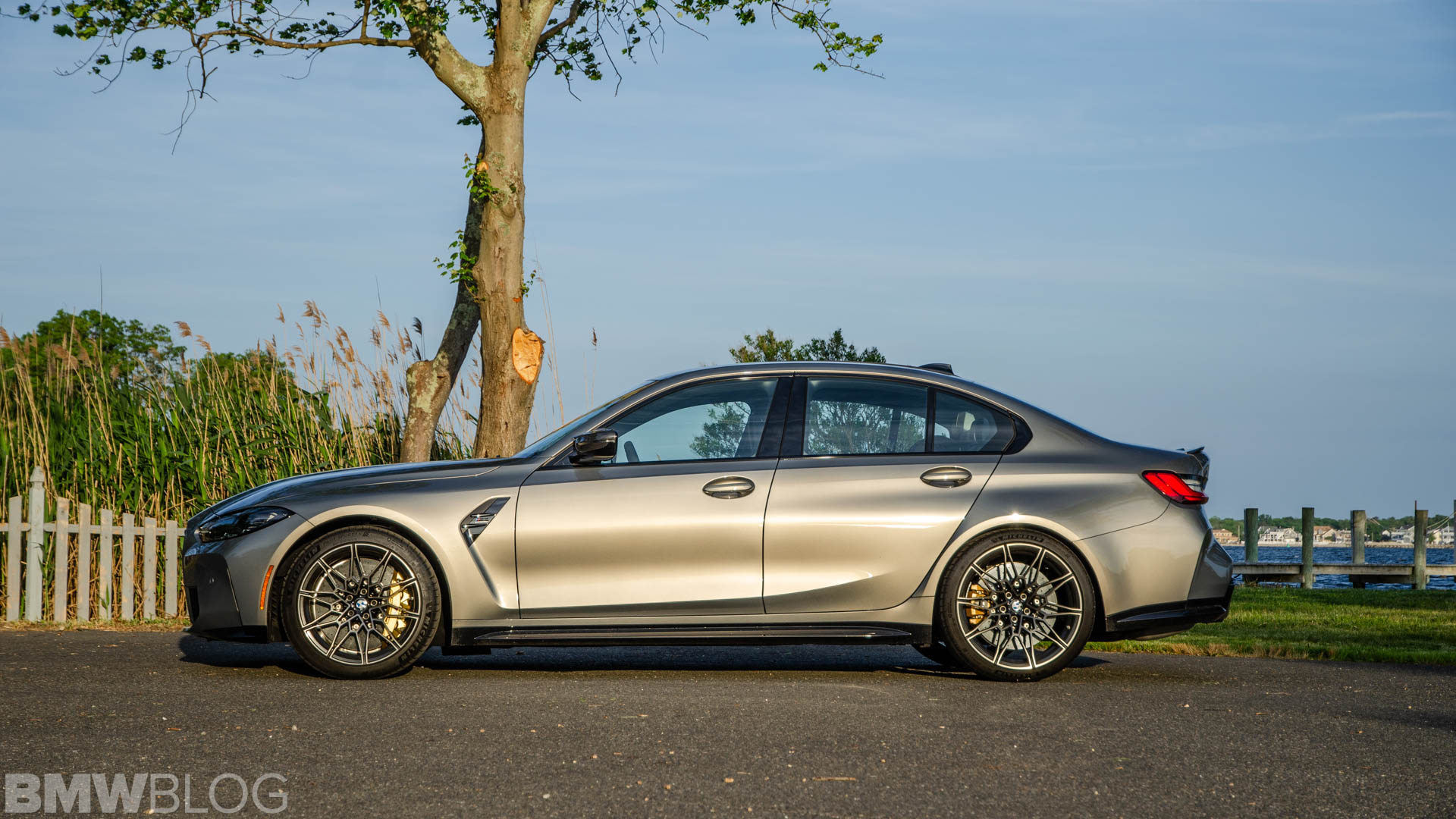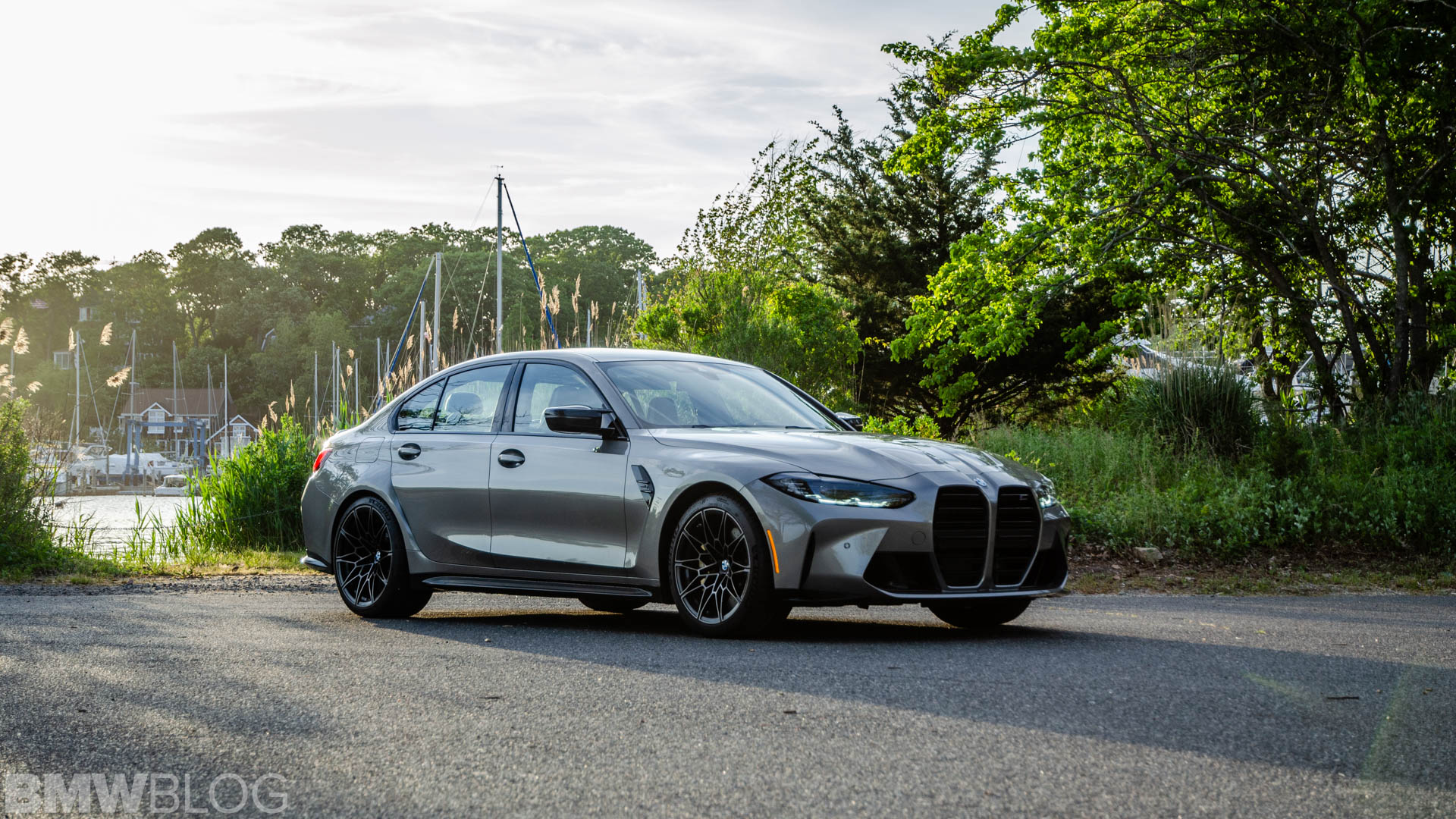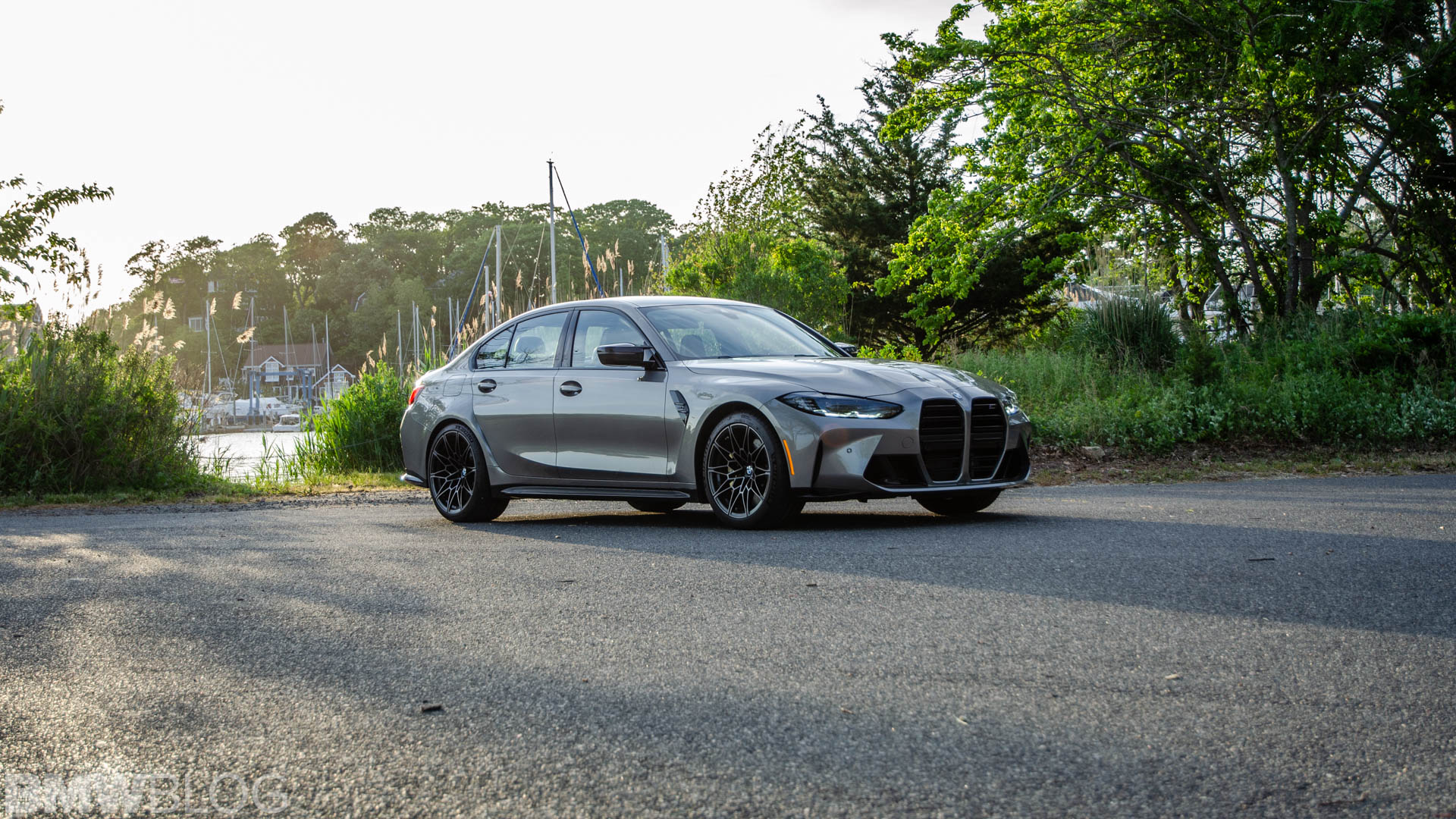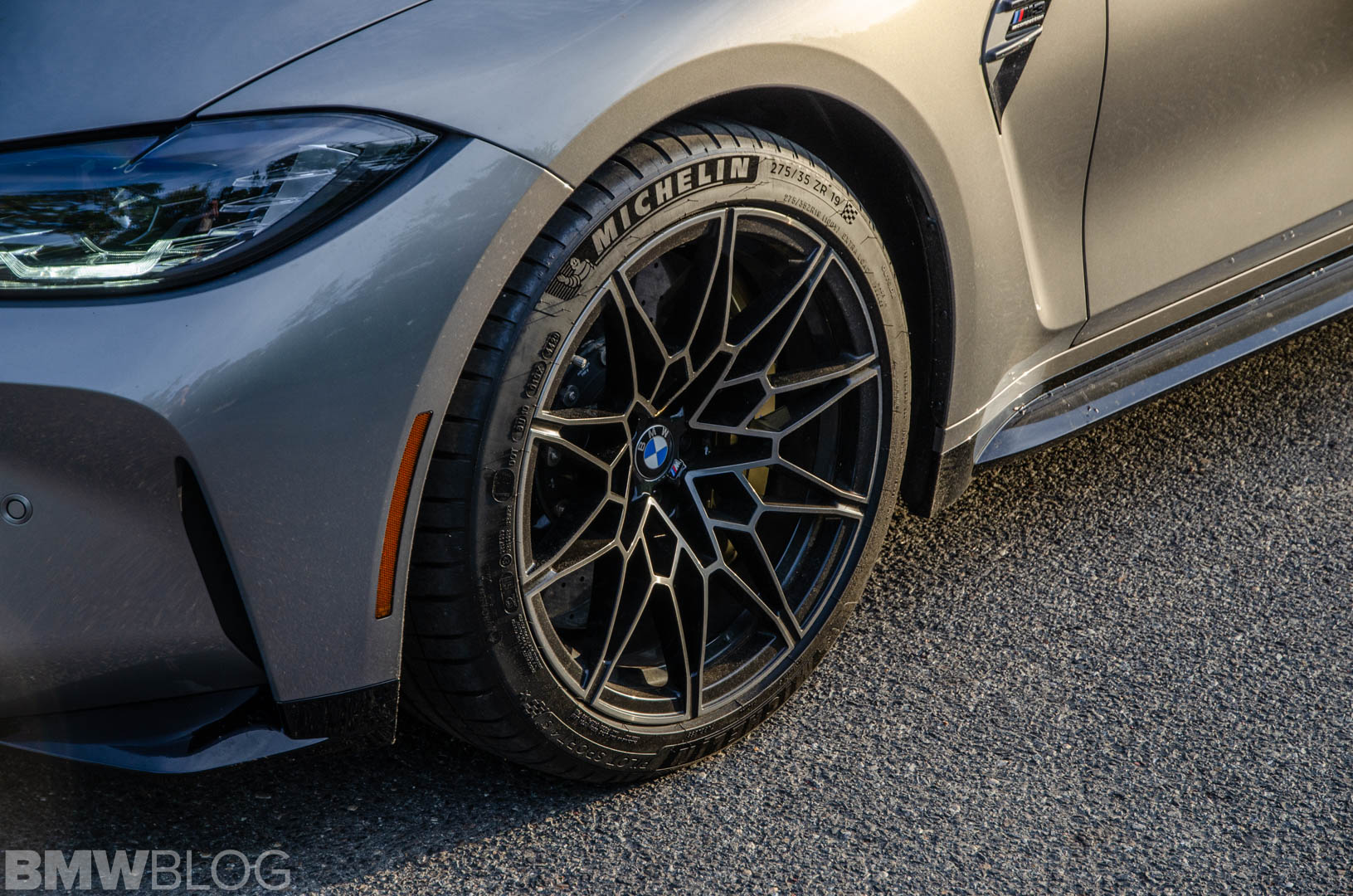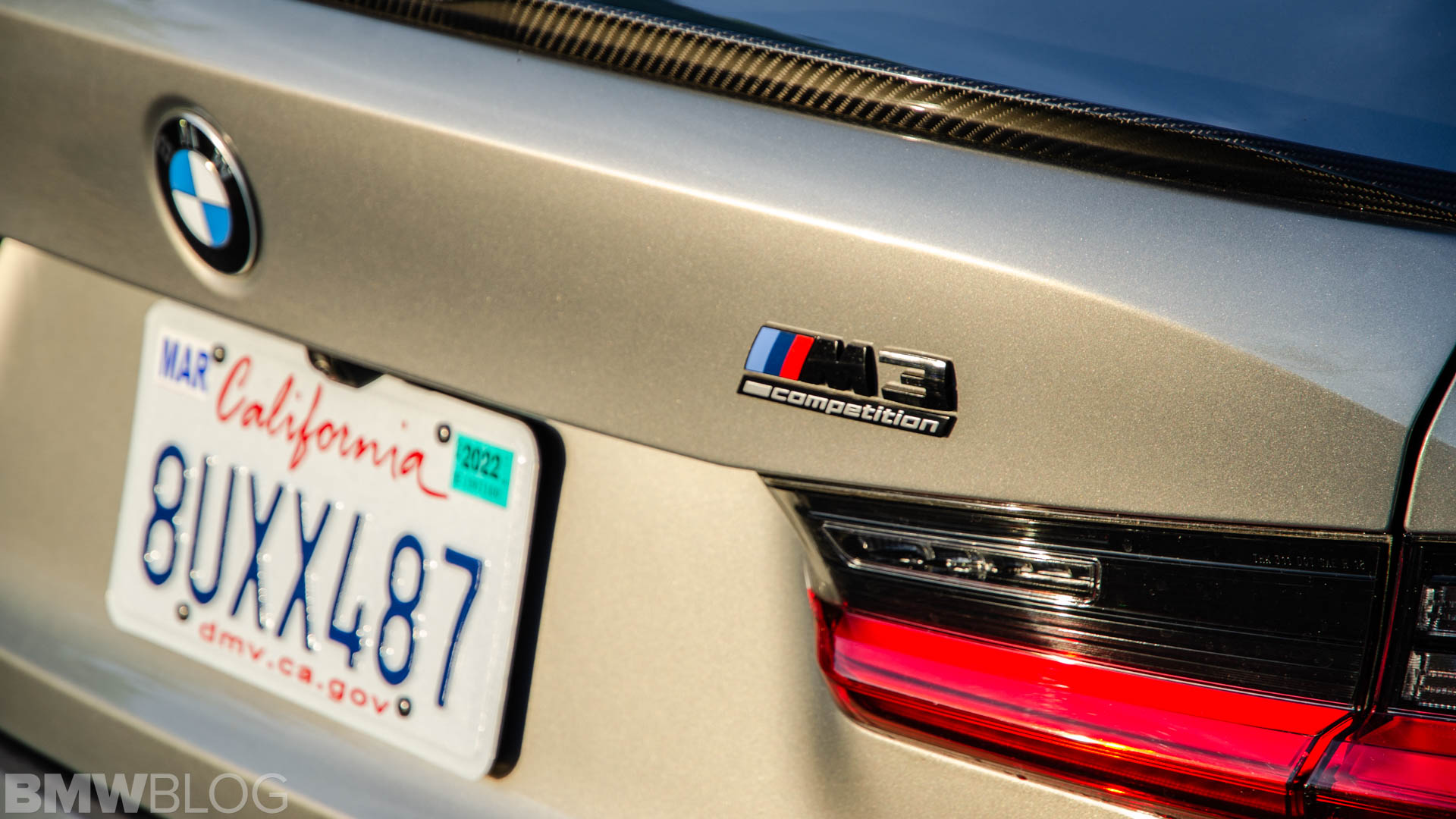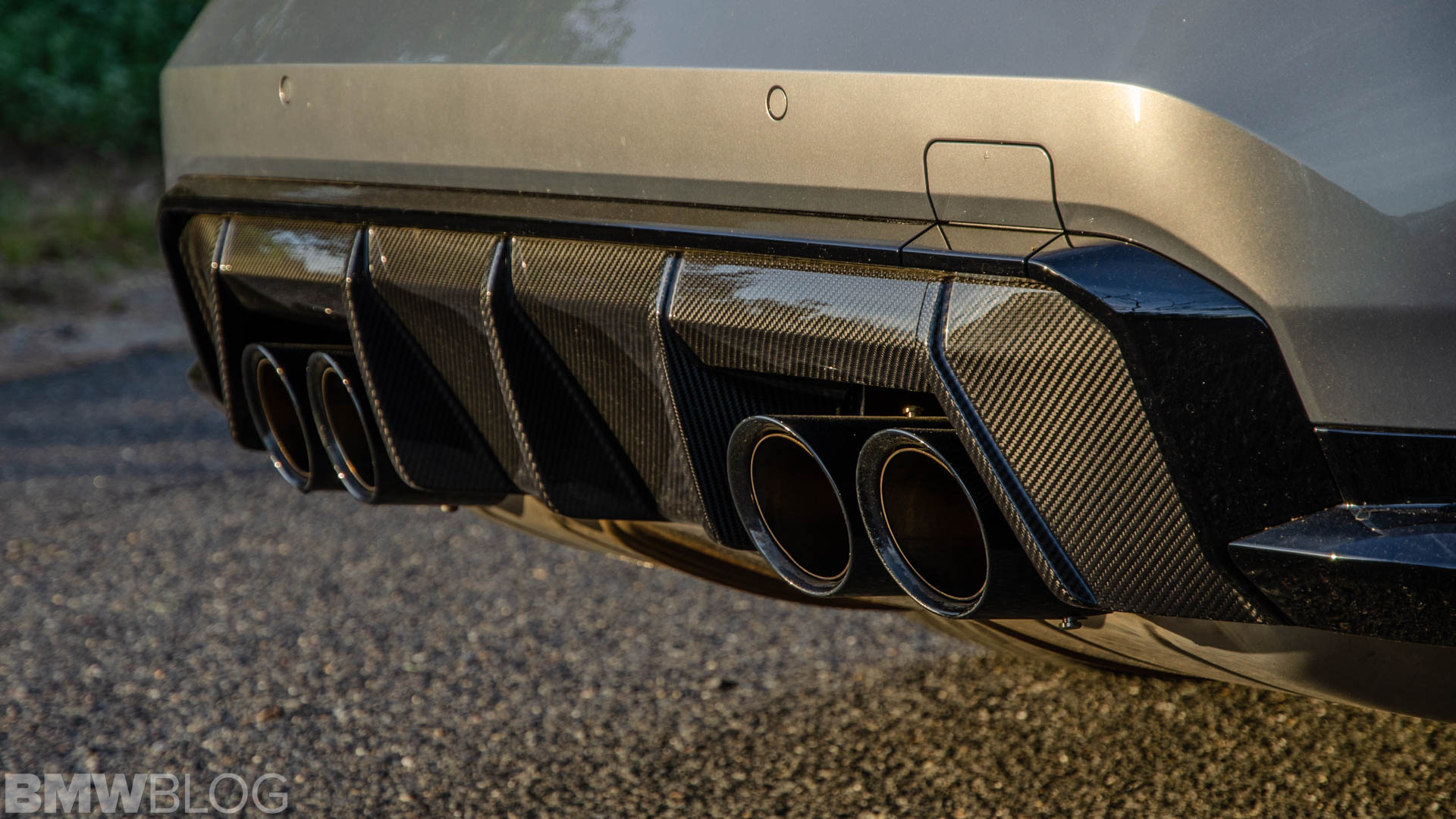It’s amazing what looks can do. As shallow as it may sound, gorgeous looks can make up for a lot of issues. Even if Margot Robbie were a complete ass-hat, I’d still follow her around like a loyal little puppy. The inverse can happen too, though. Character, personality, and charm can make up for maybe less than gorgeous looks. Take the BMW M3 Competition, for example. It looks like if a beaver fell into the same vat of acid as the Joker and somehow managed to come out looking even more vile. However, the M3 Competition gets away with it because it’s flipping brilliant to drive.
BMW North America was gracious enough to lend me both cars, back-to-back. So I literally stepped out of one week-long test with the standard M3 and into another week-long test with the M3 Competition. It’s a tough job but someone’s gotta do it…
That immediate contrast really allowed me to judge both cars, their similarities and their differences, to determine which one is better. What shocked me, though, was just how different they felt.
Spec Can Make a Big Difference
Before we get into the differences between the two, let’s first talk spec. My BMW M3 Competition wore a killer shade of Oxide Grey Metallic, which I could have sworn was actually bronze. In fact, the loan agreement document I had to sign to borrow the M3 listed the car as simply “Bronze”, without any clever name. Because the car didn’t come with its usual spec sheet in the glove box, I didn’t know exactly what the color was and a look at BMW USA’s online configurator wasn’t much help.
So I reached out to a BMW representative who told me it was Oxide Grey. It’s now one my favorite colors for the M3, with a deep, liquid-metal look to it that looks bronze in sunlight and grey in the dark. With black accents and carbon fiber bits, it’s one of the best M3 colors available.
Additionally, my test car was also equipped with the $3,800 M Carbon Bucket Seats, which wore a Silverstone/Black color scheme. Without question, the carbon bucket seats are must-haves for the M3. They not only look incredible, making the car just seem more special before you even get in, but they’re the very best seats I’ve ever been in. Yes, ingress and egress is… challenging. At best. But once you’re in, they hug like no other seat I’ve ever placed my bum in. The little testicular speed bump in the middle of the thigh rest can be a bit annoying for wider-thighed passengers but I have skinny legs, so I was fine and that’s really all that mattered to me.
While driving quickly, though, they’re incredibly supportive, shockingly comfortable, and more adjustable than they look. More importantly, though, they allow you to sit extremely low, giving the M3 one of the best non-Porsche driving positions I’ve ever experienced. That not only feels good while driving but it puts your h-point (the location the driver’s hip-point in the seat) more in line with the car’s center of gravity. That allows you to better feel what the car is doing around you, giving you a more connected feeling to the car. Also, have you seen them?! They’re fantastic.
It may sound silly but the optional carbon buckets change the entire feel and character of the interior. In the standard M3, with the regular seats, the cabin felt pretty… well, standard. It didn’t feel very much like the cabin of a $70,000 performance machine. However, sitting in those optional buckets made the M3 Competition feel different and, more importantly, more special. In my opinion, they’re must have seats. Sure, they’re not uber-comfy over long journeys but you don’t buy an M3 for long-distance comfort anyway. Take the special seats.
No Manual, No Problem
When BMW first announced there’d be two versions of the M3; one with a manual transmission and one automatic; I was certain the standard, less powerful but manually-equipped car would be the one to have. How could it not, right? Wrong. After driving both, I can definitively say the BMW M3 Competition, with the eight-speed torque converter automatic, is the one to have. You can tell from just a few feet of driving that BMW M tuned this car first and the manual afterward. The automatic transmission’s perfect calibration with the 3.0 liter twin-turbo I6 is impossible to replicate with three pedals and your right hand (or left hand, if you drive on the wrong side of the road).
There’s also an immediate sense of the Competition’s extra power. Before anyone rolls their eyes, rage clicks the comment box below, and yells at me in all caps, gimme a moment to explain. The BMW M3 Competition makes 503 horsepower, only thirty more than the standard car. You’re right in that you’ll never notice a difference from thirty horses of peak horsepower at high rpm in such heavily turbocharged engines.
However, the M3 Competition also has 479 lb-ft of torque, which 73 lb-ft more torque than the standard M3 and it’s all available under 3,000 rpm. So you squeeze the pedal, at any speed, in any gear, at almost any rpm, and the extra grunt is immediately noticeable. It feels punchier, more responsive, more alive. It feels incredibly, brutally fast. All. The. Time.
What impressed me even more, though, was just how much better the whole car felt as a result of it. Everything about the Competition; steering, suspension tuning, and body roll, all felt better. Surprisingly, I was told by a BMW representative that no chassis or suspension changes were made for the Competition model, so I feel a bit like an idiot claiming it felt different but it did. Maybe it was the M3 Comp’s ability to squeeze even more performance out of its powertrain and deliver it in a more instantaneous fashion that made if feel so brutally efficient. Whatever the reason, it did feel better and I drove both cars back-to-back, within literal minutes of each other, so I’m not making it up.
I’m going to use a tired automotive trope, so prepare yourself for the cringe… the BMW M3 Competition felt as it if was on rails. I know, it’s the cheesiest, most overused description of a BMW in history but it sort of applies to the M3 Comp. It changes direction with such immediacy and with such little body roll that it actually feels roller coaster-like. There’s this jarring sense that the car is beating the pavement — and physics — into submission. It’s almost violent, in how it changes direction, in the best way possible.
Because of that immediacy, and incredible grip, I felt like a superhero behind the wheel. And yet, when you want to be foolish, it will let you be foolish. It will slide; progressively, neutrally, and controllably; but only when you ask it to. If you want to be nice and tidy, it will do that too. It’s such an approachable and versatile performance car that it somehow manages to make you feel invincible behind the wheel and yet also in complete control.
Sometimes performance cars that are this capable feel as if they’re doing everything for you, because they are. And I’m sure the M3 Comp actually was doing everything for me, making me look like a much better driver than I am, but it never felt like it. It felt like I was the kick-ass driver I wish I was.
The BMW M3 Competition is the sort of driver’s car that inspires confidence not only in its capabilities but yours as a driver. It makes you trust what it can do but also your own inputs. The M3 Comp’s translates your inputs in such a positive way; the inputs you put in directly corelate to the M3’s movements, that you gain confidence in both the car and yourself quickly. That’s the sort of driver’s car you want on a twisty, challenging road.
Nothing’s Perfect
Are there drawbacks? Of course. Because it’s such a good driver’s car; such an incredibly competent machine; it can almost feel a bit clinical. It feels more like precision instrument, rather than a soulful being. For instance, I think the M3 Comp would run rings around an Alfa Romeo Giulia Quadrifoglio but it can’t match the Alfa for character. The Italian car feels like a living thing.
It’s also too expensive. Sure, its starting price of under $73,000 isn’t terrible but once you add metallic paint, those killer seats, and a few other bells and whistles, you’re over the $80,000 and that’s just too much for an M3. The BMW M3 was always a car average middle-class folks could aspire to own but an $80,000 price tag (and it can easily push six-figures with the right options) pushes it outside of that realm of availability.
Lastly, I still don’t think it looks good. I said it with the standard M3 and it’s my objective journalistic duty to say it again — it’s not the best looking car. And it’s not just the grille. The oddly abrupt rear wheel arch, the painfully fake fender vents, the vanilla taillights, and lack of Hofmeister kink give the M3 look like some sort of generic sports car out of a Grand Theft Auto game. It just doesn’t look like an M3. Actually, it doesn’t even really look like a BMW. And that bothers me.
Will I Buy One?
With all of that said, positives and negatives, I’d still buy one tomorrow if I could. It’s a sensational motor car and it could be the very best driving M3 of all time. I’d have to drive it back-to-back with an E46 M3 to really see if that’s true but the fact that I’m even questioning it makes me incredibly happy. The G80 2021 BMW M3 Competition proves that the M Division can still beat the snot out of its competition (pardon the pun) if it wants to and I absolutely love it for that.
2021 BMW M3 Competition
Exterior Appeal - 7.5
Interior Quality - 8
Steering Feedback - 8.5
Performance - 9
Handling - 9
BMWness/Ultimate Driving Machine - 9
Price Point - 8
8.4
It's a sensational motor car and it could be the very best driving M3 of all time. I'd have to drive it back-to-back with an E46 M3 to really see if that's true but the fact that I'm even questioning it makes me incredibly happy. The G80 BMW M3 Competition proves that the M Division can still beat the snot out of its competition (pardon the pun) if it wants to and I absolutely love it for that.


